Student Loan Debt Changes
Last month, the White House announced a plan to address Student Loan Debt Relief and the Payment Forbearance that has been in place since March of 2020. To recap, federal student loan payments and interest have been paused due to COVID. This has been a welcome relief to borrowers across the country, but more is on the way.
Student loan borrowers, who meet certain criteria, will see one-time forgiveness of up to $20,000 on their federal student loan balances. The stipulations are as follows:
· Individual borrowers must earn less than $125,000 annually (or $250,000 annually per household).
· Only federal student loans qualify. Private student loans are not eligible for relief and do not qualify for payment forbearance.
· Most borrowers will qualify for up to $10,000 in relief, while those who received a Pell Grant will qualify for up to $20,000 in relief.
It’s important to note that borrowers who have a loan balance under the $10,000/$20,000 loan threshold will only qualify for relief up to the balance owed.
For example:
Mary has federal student loan balances totaling $8,500. She meets the income threshold to qualify for relief and was a recipient of a Pell Grant. Even though Mary would fall into the $20,000 relief bracket, she will receive $8,500 in relief and will no longer owe student loan debt.
Here’s another example:
Paul has $37,000 in federal student loans and $10,000 in private student loans. He did not receive a Pell Grant, but he does meet the income threshold to qualify for relief. Paul will receive $10,000 toward his federal student loan balance. After the relief, Paul will owe $27,000 on his federal student loan and $10,000 on his private student loan balance.
Did you need another example? Here you go:
Peter has $5,000 remaining on his federal student loan balance. He did not receive a Pell Grant. His income is $126,000 per year. Even though John has a federal student loan balance under the relief threshold, he does not qualify for student loan debt relief due to his income.
Even if you do not qualify for the widespread debt relief, you can still benefit from the federal student loan payment pause. Remember, there is no payment required, which frees up money if you need to pay an unexpected medical bill or if you came up short on groceries this week; however, if you are in the position to continue to pay, every cent will be applied to the principal balance. In the end, you will save money on interest and pay off your balance sooner.
If your student loans were in default when the forbearance went into effect, you are not being reported as delinquent at this time, nor are you accruing additional interest. Now is the time to save up and get back in good standing when the forbearance expires at the end of 2022.
Speaking of balances, additional information regarding the changes to the income-driven repayment plan is forthcoming. Also, look for further details about the Public Service Loan Forgiveness (PSLF) option for qualified public servants. If you have been working full-time for a government organization, 501(c)(3) nonprofit, AmeriCorps/PeaceCorps, Religious organization, or other nonprofit organization providing a qualifying public service as their primary purpose, you can apply for loan forgiveness after making 10 years’ worth of payments on your federal student loan. Don’t forget – the suspended payments introduced in March of 2020 count as payments towards your 10-year/120-month timeframe for PSLF.
Example: If you graduated college in September 2019, you would more than likely have had six months before you were asked to begin repayment on your federal student loans. That would have placed your first payment due date in March of 2020 – right when the forbearance started. When the forbearance ends in December 2022, you will have received credit for 34 payments before you have even paid a single cent towards the balance owed. That means you only have to pay 86 more payments before qualifying for PSLF.
What if you continued to pay your federal student loans during the payment pause? Great news! You can request a refund for any payments made since March 13, 2020!! Let’s say that you had a $10,000 balance owed on your federal student loans before the payment pause kicked in and you made $3,000 in payments from that date to the present. Your new balance is $7,000. Applying for a refund for the payments you made during the pause will bring your balance up to $10,000 and allow you to qualify for the full $10,000 loan forgiveness. Voila – you no longer owe on your federal student loans. What you do with the $3,000 savings is up to you, but I recommend paying off high-interest rate credit cards or putting it towards the down payment on your new home.
Is there something that you want me to post about? I want to hear from you! Leave a comment below or email me.
Krista Kyte is a personal finance blogger and personal banker with over 20 years of experience in the financial industry. Krista is passionate about helping our members understand their financial situations. She writes tips that help consumers reach and maintain financial security and start living the life they’ve always wanted.




